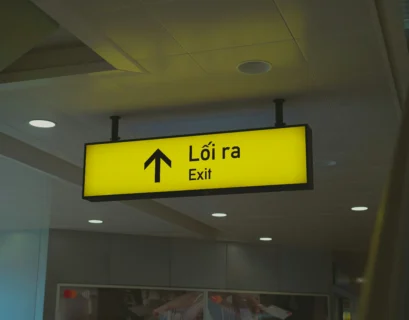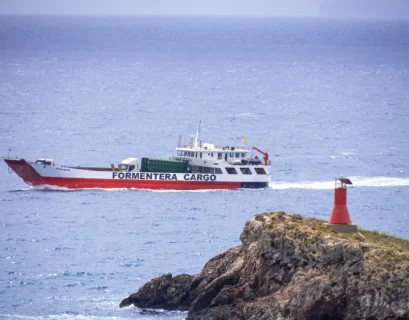Planning to skip between Mallorca, Ibiza, or the Canaries and use trains on the mainland in between? The Renfe Spain Pass can be a smart way to connect ferry and flight gateways without juggling individual train tickets. Below you’ll find a clear, island-hopper-friendly breakdown of how the pass works, what it covers (and doesn’t), and how to stitch it into a seamless sea-and-rail itinerary.
In short: the Renfe Spain Pass is an electronic pass for non-residents that gives you a set number of one-way train journeys in Spain within one month. It’s personal, requires your passport, and is valid on long-distance and selected regional services (including AVE and Alvia high-speed trains) where seat reservations apply, according to Renfe and independent guides.

What the Renfe Spain Pass is (and isn’t)
- Who can use it: Non-residents of Spain. The pass is personal and non-transferable; carry your passport.
- What you get: A fixed number of one-way journeys to be used within one month from your first trip, in either Standard or Comfort class.
- Where it works: Long-distance and regional trains that require seat reservations, including AVE and Alvia high-speed services.
- How you use it: For each trip, you must validate your pass by obtaining a ticket/seat reservation for a specific train. You can do this online, at ticket offices, via travel agencies, or by phone.
- What it isn’t: It doesn’t cover ferries, flights, urban metros, or city buses. It’s for intercity rail travel.
Why island hoppers should care
Spain’s islands aren’t connected by rail, but the mainland ports and airports that serve them are. The pass can shrink your logistics and costs between big gateways like Barcelona, Valencia, Cádiz, Huelva, Madrid, Alicante, and Málaga especially if you’re making multiple mainland hops between ferries or flights within a month.
Mainland gateways to the islands: rail + port pairing
Use the table below to plan smooth transfers between trains and ferries. Local transport may be required between station and terminal.
| Mainland island gateway | Nearest major Renfe station | Typical island connections | Notes for transfers |
|---|---|---|---|
| Barcelona (Port) | Barcelona Sants | Mallorca, Menorca, Ibiza | Allow time for port shuttle/taxi from Sants to terminals. |
| Valencia (Port) | Valencia Joaquín Sorolla | Mallorca, Ibiza, Menorca | High-speed and long-distance links to Madrid, Barcelona, Andalusia. |
| Dénia (Port) | Alicante-Terminal or Valencia JS | Ibiza, Mallorca | Final leg to Dénia by regional coach or tram; not Renfe-operated. |
| Cádiz (Port) | Cádiz | Canary Islands (selected routes) | Direct Renfe services via Seville; check ferry schedules carefully. |
| Huelva (Port) | Huelva | Canary Islands (selected routes) | Plan buffers; long ferry durations mean early check-in. |
How to use the pass step-by-step
- Buy the pass in your chosen class (Standard or Comfort) with the number of one-way journeys you need for your month.
- Plan each rail leg that links your ferries or island flights (e.g., Barcelona → Valencia before a Balearic ferry).
- Validate each journey by booking a ticket/seat reservation for a specific train:
- Online via Renfe, at stations, through travel agencies, or by phone.
- Reservations are mandatory on AVE/Alvia and other long-distance services.
- Carry your passport and digital/printed journey confirmation when you board.
- Repeat until you’ve used your allotted journeys within one month.

Is the Spain Pass worth it for island hopping?
If you’ll make several mainland hops within a month say, connecting ports like Barcelona, Valencia, and Andalusia this pass can simplify logistics and help with budgeting. If you only need one or two train rides, buying point-to-point tickets might be simpler. For broader multi-country rail travel, look at regional multi-country passes; for Spain-only and non-residents, the Renfe Spain Pass keeps things straightforward.
| Option | Best for | Pros | Trade-offs |
|---|---|---|---|
| Renfe Spain Pass | Non-residents doing multiple Spain rail legs in 1 month | Simple quota of trips; high-speed access with reservations | Must validate each leg; fixed validity window |
| Point-to-point tickets | 1–2 rail segments or fixed dates booked well ahead | Pay only for what you use; no pass to manage | Prices can rise close to departure; still need reservations on many trains |
| Multi-country passes | Cross-border European itineraries | Flex across countries | Overkill if you’re staying within Spain |
Island-hopper itinerary ideas (rail + sea)
- Balearic chain with mainland hop: Fly to Barcelona → ferry to Mallorca → ferry to Ibiza → fly to Valencia → train to Madrid.
- Canary combo with Andalusia: Train Madrid → Cádiz → ferry to Gran Canaria → flight to Tenerife → fly to Huelva/Seville → train to Málaga or Madrid.
- East coast connectors: Ferry Ibiza → Dénia → coach to Alicante → high-speed train to Madrid or Barcelona.

Practical tips to avoid surprises
- Buffer your transfers: Ferries can be weather-delayed; leave generous time before your train.
- Peak demand: Popular AVE/Alvia services can fill up validate/reserve early when you know your plans.
- Class choice: Standard vs Comfort affects seat type and onboard experience; choose consistently across your journeys.
- Stations vs ports: Some ports (e.g., Dénia) aren’t on Renfe; factor in a bus/tram link.
- Keep ID handy: The pass is personal carry your passport for inspections.
What the pass does not cover
- Ferries between the islands and the mainland
- Intra-island transport or urban metros and city buses
- Seatless boarding: you must validate and hold a seat for each train
FAQs
Who is eligible for the Renfe Spain Pass and what ID is needed?
The pass is for non-residents of Spain only and is issued to a named traveler. You must enter your passport details when buying and carry the same passport on board for inspection. It’s personal and non-transferable.
How do I validate a Spain Pass before boarding high-speed trains?
Before travel, use Renfe’s channels (website/app, station ticket office, phone, or a travel agency) to book a specific train and seat against your pass. Choose your route, date, and time, confirm the reservation, and carry the ticket digitally or printed. AVE/Alvia and most long-distance services require this validation; seats are subject to availability.
When is a Spain Pass cheaper than buying point-to-point tickets?
It typically pays off if you’ll take several long-distance rides within one month, especially on peak dates or when booking late. If your plans are fixed and you can snag early discounted fares, individual tickets may be cheaper. Compare the pass price (Standard vs Comfort) with the sum of flexible fares for your segments.
What happens if my ferry is delayed and I miss a reserved train?
The pass doesn’t protect you from ferry delays; your reservation is tied to a specific departure. If you realize you’ll miss it, contact Renfe or visit a ticket office as soon as possible to change to a later train changes depend on availability and the pass conditions. After the train departs, the journey may be forfeited.
How many train journeys should island hoppers plan within one month?
Count every mainland leg between your ports and airports, then pick the smallest pass bundle that covers them (optionally add one extra for flexibility). Many island-focused itineraries use 3–6 rail segments in a month. Keep all trips within the one-month validity window that starts with your first journey.
Bottom line
For island hoppers who’ll rack up several mainland rail legs within a month, the Renfe Spain Pass offers a clean, reservation-based way to connect ports and airports across Spain. Map your ferry or flight anchors first, count your required train segments, pick Standard or Comfort, and validate early for the smoothest sea-to-rail experience.













